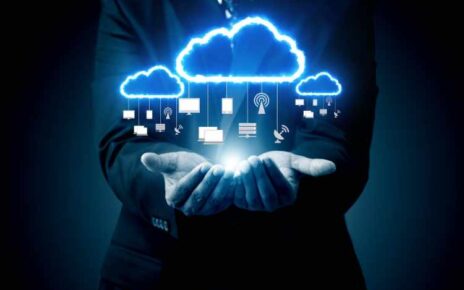The key to sustainable growth and increased productivity in agriculture is innovation. Agriculture drone is one such groundbreaking innovation that has been making waves in the farming industry. These remarkable flying machines are not just toys; they are the future of farming. In this article, we are going to look at how drones are changing the face of agriculture.
Advancing Agriculture: A New Perspective
Agricultural drones or UAVs (Unmanned Aerial Vehicles) are changing the way farmers see their profession. These versatile tools give the farmers a bird’s-eye view of their fields, revealing information previously unfathomable. With the use of these drones, farmers can accurately monitor their crops to make timely, and intelligent decisions. Also, they can reap a bountiful harvest while reducing waste of resources.
Precision Agriculture: Maximizing Efficiency
In particular, one advantage of the use of an agriculture drone is that it can accurately perform such work. These drones can be outfitted with a variety of sensors and cameras that gather information about the state of the crops. Soil quality, crop health, pest infestations, and other data are collected.
Advanced analytics are used to process the data, helping farmers pinpoint problems within their fields. Equipped with this information, farmers can act with a more targeted approach, applying fertilizers or pesticides only where required. This saves on costs and has less impact on the environment.
Agriculture Drone: Boosting Crop Monitoring and Management
An Agriculture drone is very good at crop monitoring and management. They can cover large areas quickly and efficiently, saving time and labor compared to traditional field inspection. Drones fitted with thermal cameras can detect temperature differences, and can thus catch stress or disease in crops early.
These specialized kinds of drones also enable round-the-clock monitoring, so that farmers can respond quickly to changing circumstances. For instance, they can respond immediately to water stress symptoms and adjust irrigation systems or pest outbreaks to be detected early and damage minimized.
Enhancing Yield Prediction and Harvesting
Accurate prediction of crop yields is vital to planning and logistics. This is where agriculture drones come into play. With drones collecting data at every stage of the growing process, producers can make accurate estimates of yield. This information is invariably useful in framing harvest schedules, planning storage facilities, and managing transportation logistics.
Furthermore, drones equipped with highly specialized cameras and sensors can be used to decide the best time for harvest. Their identification of the ideal stage of ripeness helps harvest crops in peak quality. That means higher prices on the market and less food waste.
Eco-Friendly Farming Practices
These UAVs are well adapted to the increasing importance of sustainable agriculture. With the help of drones, which can precisely direct materials like fertilizers to particular areas, farmers can greatly reduce their chemical utilization. This not only reduces costs but also curbs the negative effects on the environment that accompany traditional agricultural methods.
In addition, drones can assist in soil and water management by identifying areas at risk of erosion or over-irrigation. If farmers can solve these problems quickly, they will help in the rational use of natural resources.
Challenges and Future Outlook
The benefits of agricultural drones, however, do not come without their challenges. Some obstacles encountered by farmers are initial costs, regulatory hurdles, and the need for skilled operators. But with technology advancing, these problems are gradually being resolved, bringing agriculture drones ever closer to the masses.
The future of drones in agriculture is bright. Technology keeps evolving, and we can expect ever more advanced drones. These advanced tools can integrate greater levels of automation and allow them to ride with other agricultural equipment. Improved battery life and AI capability will make it a must-have piece of equipment for farmers everywhere.
Empowering Small-Scale Farmers
Apart from servicing large commercial farms, agriculture UAVs are also capable of helping out small-scale farmers. Most developing regions, however, lack the resources and technology. It is here where these tools can even out the playing field. Small-scale farmers can use these drones to acquire important data and give them better information for planning their crops.
Take the case of a micro-farmer in an isolated village, who can deploy a drone to inspect their fields and see what needs attention. This information can be passed on to agricultural experts or extension services, allowing targeted assistance and advice. This is how the drone becomes a tool for empowerment, which assists farmers in increasing their yield and their income.
Dealing with Pressure Situation!
Agriculture is also always a victim of climate change. Farming operations can be disrupted by extreme weather events, sudden changes in rainfall patterns, and a shifting growing season. Drones for agriculture can be a valuable tool in helping to combat these challenges.
By continually observing crops and soil, drones can give early alarms of upcoming problems. These adaptive strategies can also be used by farmers to offset the effects of bad weather. For example, if a drone finds evidence of drought stress in a field, farmers change their irrigation strategies. By doing so, they can preserve water resources and crop health.
Promoting Data-Driven Decision-Making
Data is the money of modern agriculture, and drones are undoubtedly the best data generators. The drones collect information not only about the health of crops but also about overall farming operations. The data can be combined with farm management software to give a complete picture of the agricultural enterprise.
This data can allow farmers to fine-tune their planting schedules, compare the ROI for different crops, and readjust their farming methods. The outcome is smarter decision-making, which equates to more profitability and sustainability.
Collaboration and Knowledge Sharing
An agriculture drone has promoted cooperation and exchange within the agrarian community. Data, experience, and wisdom circulate with ease among farmers, agronomists, and researchers.
This joint effort can even help to drive innovation in agriculture. The more data that is collected and shared, the better able researchers are to develop new algorithms and models. These models help to face up to specific farming challenges. One example is that machine learning algorithms can be taught to detect early symptoms of crop diseases, so interventions can be more rapid and precise.
Conclusion
In modern farming, the role of an agriculture drone cannot be ignored. These incredible machines are revolutionizing agriculture by making it more accurate, sustainable, and powerful. With the development of technology and its increase in affordability, we can expect soon to see drones as an everyday part of every farmer’s toolbox. It works together with the farmer to make this a world where people eat well.




